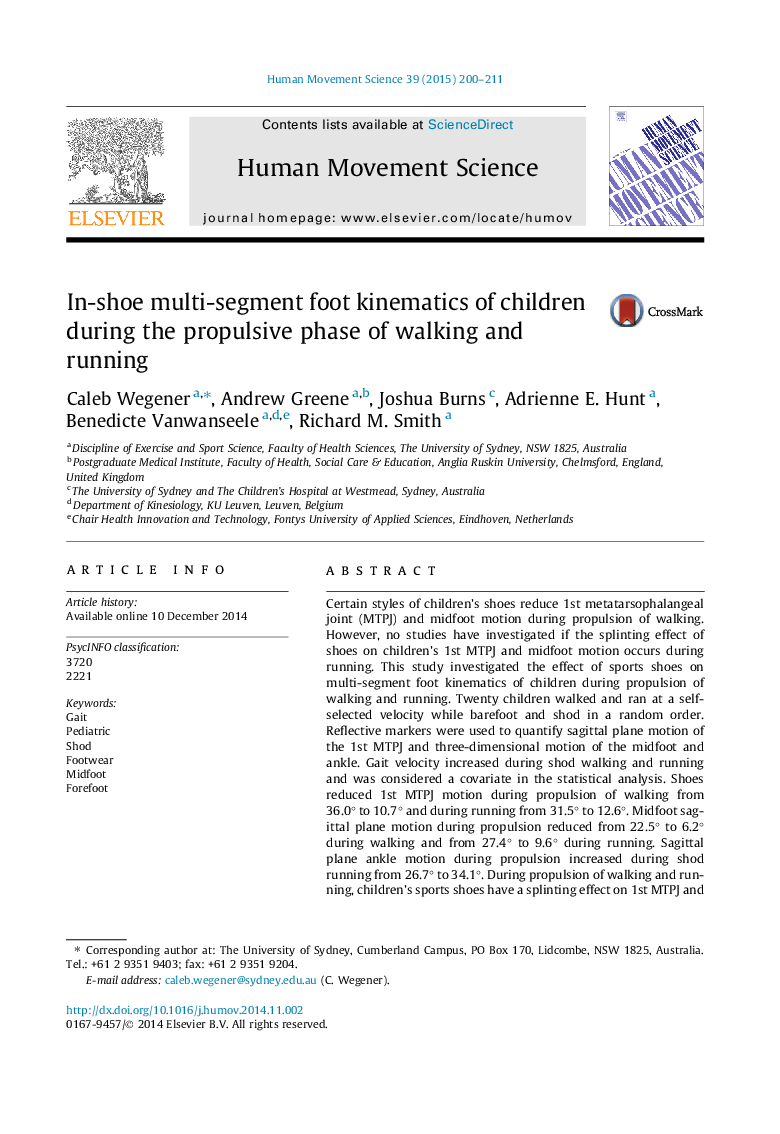| Article ID | Journal | Published Year | Pages | File Type |
|---|---|---|---|---|
| 928300 | Human Movement Science | 2015 | 12 Pages |
•Children’s midfoot is not rigid during propulsion of walking or running.•Conventional sports shoes reduce children’s midfoot motion during propulsion.•Ankle partially compensates for reduced midfoot plantarflexion during shod running.
Certain styles of children’s shoes reduce 1st metatarsophalangeal joint (MTPJ) and midfoot motion during propulsion of walking. However, no studies have investigated if the splinting effect of shoes on children’s 1st MTPJ and midfoot motion occurs during running. This study investigated the effect of sports shoes on multi-segment foot kinematics of children during propulsion of walking and running. Twenty children walked and ran at a self-selected velocity while barefoot and shod in a random order. Reflective markers were used to quantify sagittal plane motion of the 1st MTPJ and three-dimensional motion of the midfoot and ankle. Gait velocity increased during shod walking and running and was considered a covariate in the statistical analysis. Shoes reduced 1st MTPJ motion during propulsion of walking from 36.0° to 10.7° and during running from 31.5° to 12.6°. Midfoot sagittal plane motion during propulsion reduced from 22.5° to 6.2° during walking and from 27.4° to 9.6° during running. Sagittal plane ankle motion during propulsion increased during shod running from 26.7° to 34.1°. During propulsion of walking and running, children’s sports shoes have a splinting effect on 1st MTPJ and midfoot motion which is partially compensated by an increase in ankle plantarflexion during running.
